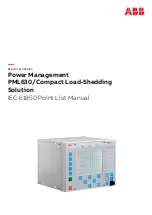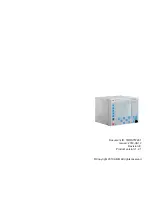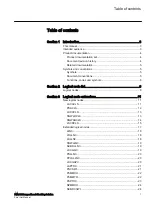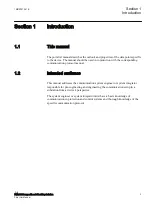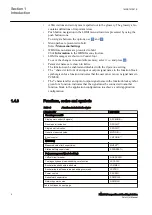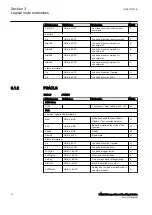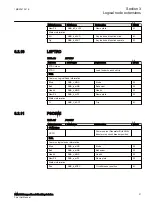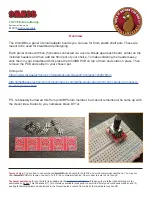
•
Abbreviations and acronyms are spelled out in the glossary. The glossary also
contains definitions of important terms.
•
Push button navigation in the LHMI menu structure is presented by using the
push button icons.
To navigate between the options, use
and
.
•
Menu paths are presented in bold.
Select
Main menu/Settings
.
•
WHMI menu names are presented in bold.
Click
Information
in the WHMI menu structure.
•
LHMI messages are shown in Courier font.
To save the changes in nonvolatile memory, select
Yes
and press
.
•
Parameter names are shown in italics.
The function can be enabled and disabled with the
Operation
setting.
•
The ^ character in front of an input or output signal name in the function block
symbol given for a function, indicates that the user can set an own signal name in
PCM600.
•
The * character after an input or output signal name in the function block symbol
given for a function, indicates that the signal must be connected to another
function block in the application configuration to achieve a valid application
configuration.
1.4.3
Functions, codes and symbols
Table 1:
Functions included in the device
Functionality
IEC 61850
Generic process I/O
Single point control (8 signals)
SPC8GGIO
1)
Double point indication
DPGGIO
1)
Single point indication
SPGGIO
1)
Generic measured value
MVGGIO
1)
Event counter
CNTGGIO
1)
Monitoring
Measured value limit supervision
MVEXP
1)
Station battery supervision
SPVNZBAT
1)
Power management (load-shedding)
Critical circuit breaker
NCBDCSWI
Contingency based load-shedding core function
LSCACLS
Busbar-wise sheddable loads data
LDMMXU
Busbar-wise load feeders load-shedding command
LSPTRC
Power source
PSCSWI
Subnetwork supervision
SNWRCLS
Network power source
NPMMXU
Table continues on next page
Section 1
1MRS757261 E
Introduction
6
PML630/Compact Load-Shedding Solution
Point List Manual

